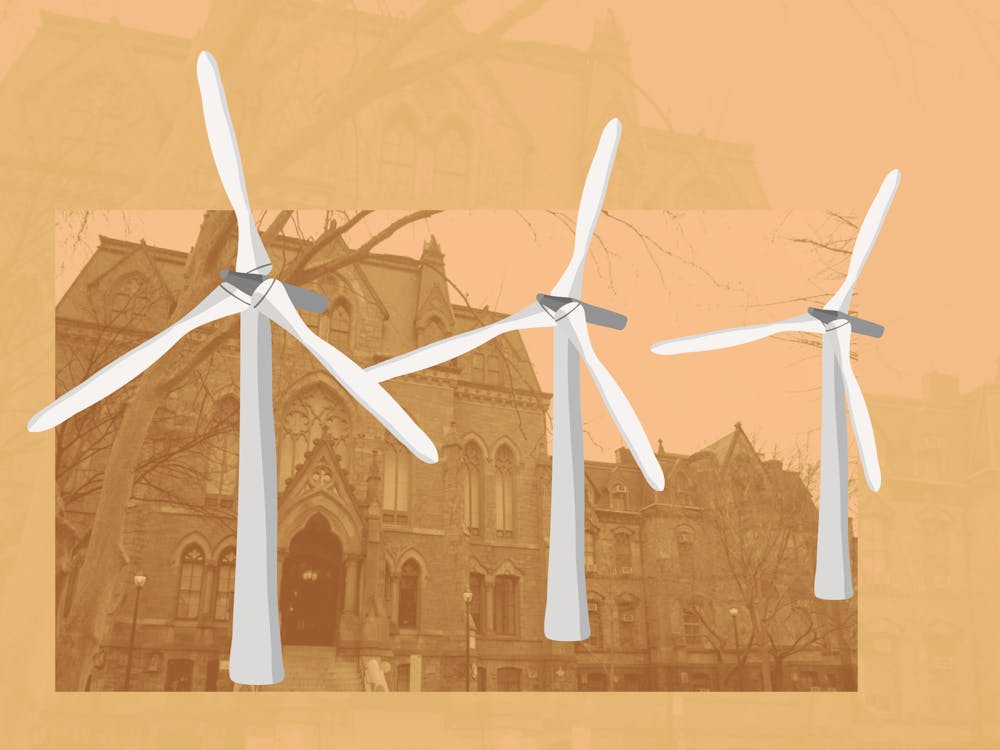As the federal government continues to declare new goals for offshore wind energy, an emissions-free energy resource that relies on the deployment of wind turbine farms in coastal bodies of water, Penn’s leadership issued an update to the community in early November describing its own efforts to combat the effects of climate change. The announcement expounds on the growth of Penn’s venture capital portfolio of investments in solar power projects. Yet, estimates report that around $922 million of Penn’s endowment still finances fossil fuel production. In terms of operational advancements, Penn's leadership highlighted Penn’s Power Purchase Agreement (PPA) with Community Energy for the creation of two new solar facilities with a capacity of 220 megawatts to supply about 75% of the total electricity demand of the academic campus and the University of Pennsylvania Health System. This is a significant step in meeting Penn’s 2050 net-zero greenhouse gas emissions goal. However, it does not eliminate the fact that Penn continues its association to unsustainable energy production. Given Penn’s successful history of renewable energy purchases and the accelerating motion of offshore wind energy in the US, Penn must invest in an offshore wind power purchase agreement that will contribute to its long-term electricity goal.
Penn has a history of adopting wind power purchases, or long-term contracts under which a business agrees to purchase electricity directly from an energy generator. Penn first signed a contract with Community Energy in 2006 for the Bear Creek Wind Farm, one of the first of its kind in Pennsylvania, and purchased 27% of Penn's energy demand from wind-generated power. In contrast, developing offshore wind projects are projected to have even higher capacities and reduced electricity generation costs. New Jersey’s first offshore wind farm off the southern coast, Ocean Wind, is set to begin operating in 2024 with a capacity of 1,100 megawatts and as many as 99 state-of-the-art GE Haliade-X turbines, enough to meet 100% of Penn’s 2019-2020 energy demand 11 times over. Another project, Atlantic Shores Offshore Wind, aims to begin construction in 2024 with a capacity of 1,510 megawatts. Nationally, many states have established more than 29,000 MW of offshore wind procurement targets. Since New Jersey and Philadelphia have a combined grid, the regional transmission of electricity from offshore wind would be possible, and projects such as Ocean Wind and Atlantic Shores Offshore Wind have already begun to submit requests for substation upgrades. With the recent boom of offshore leasing deployments in the US, Penn has a unique opportunity to take advantage of this high technical resource potential to provide a solution to its fossil fuel dilemma.
Let’s be clear: the timing and magnitude of wind power installations in the U.S. are often a function of tax incentives. However, under the new Production Tax Credit (PTC) policy, any offshore wind project on which construction begins by 2025 will qualify for a 30% investment tax credit. In fact, as part of the $1.75 trillion reconciliation bill, America’s renewable energy tax credits are poised to undergo a significant makeover. The PTC extension is projected to start at $5/MWh and rise to $25/MWh (considerably higher than the current $15/MWh) given that developers agree to pay prevailing wages and create a workforce of union apprentices. This is a completely viable option in which Penn can invest to become a renowned leader in sustainability while also meeting its climate goals.
Under the current action plan, Penn will allocate $60 million to recruit at least 10 faculty in energy and the environment. Penn trustees also recently approved the design for the Vagelos Laboratory for Energy Science and Technology, a $173 million facility with completion anticipated in Fall 2024. Additionally, Penn is home to the Roy and Diana Vagelos Integrated Program in Energy Research (VIPER) and the Kleinman Center for Energy Policy (KCEP), which enables students to engage in the field by and network with energy professionals. This expanding energy consortium will allow Penn to create the next generation of leaders in energy research and policy and to accurately monitor the structural changes to its electric supply chain.
As one of the highest-ranking educational institutions in the world and a primary force in Philadelphia’s employment and infrastructure, Penn must engage in sustainable energy practices, and in doing so, serve as a leading figure in the fight against climate change. The clock is ticking, and the time to act is now. If Penn plans to obtain 75% of its electric supply for its campus and Health System from solar power, what about the other 25%? As a domestic, clean energy source, offshore wind energy has the capacity to contribute to some of that energy demand. Penn’s history with wind power contracts and the promising research and development being put into offshore technologies are the perfect recipe for a novel solution to this problem. By committing to a long-term offshore wind energy power purchase agreement, Penn would not only be effecting positive stewardship of Philadelphia’s Municipal Energy Master Plan, but it would help move the institution’s consumption toward a lower carbon intensity.
SEAN DERESH is a College and Engineering junior in the Vagelos Integrated Program in Energy Research. His email is sderesh@sas.upenn.edu.









